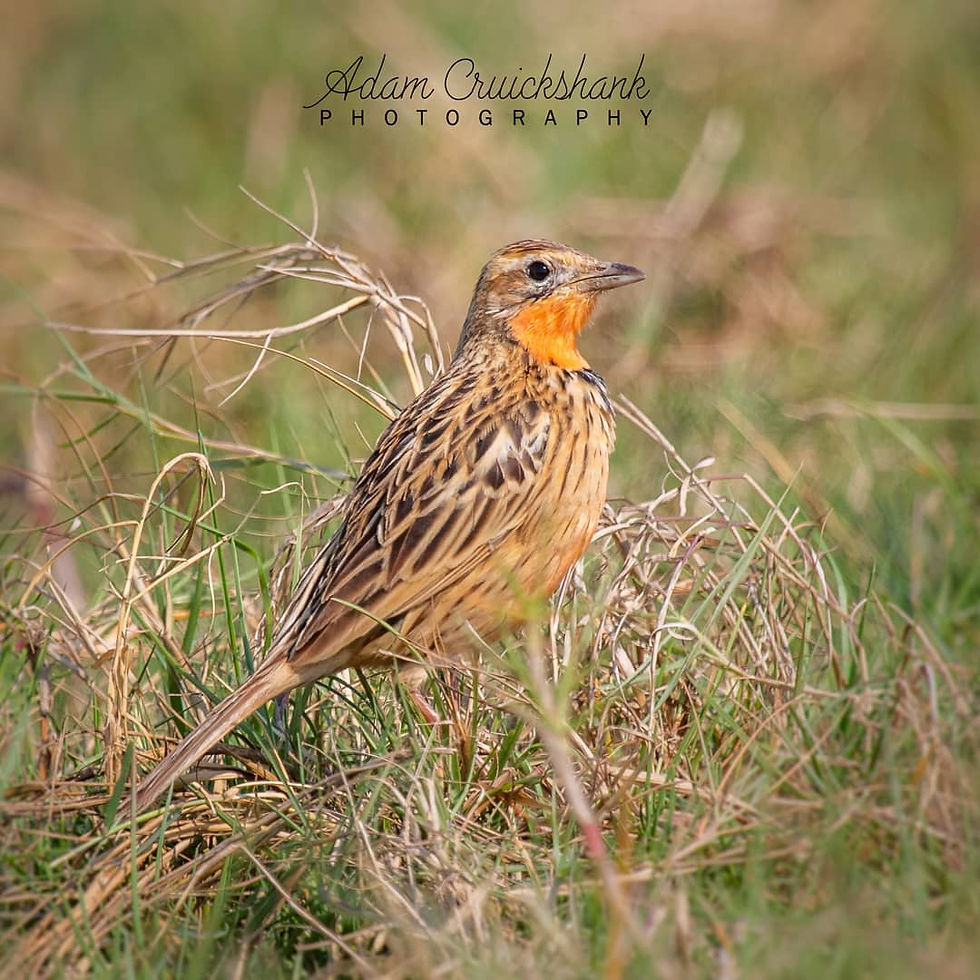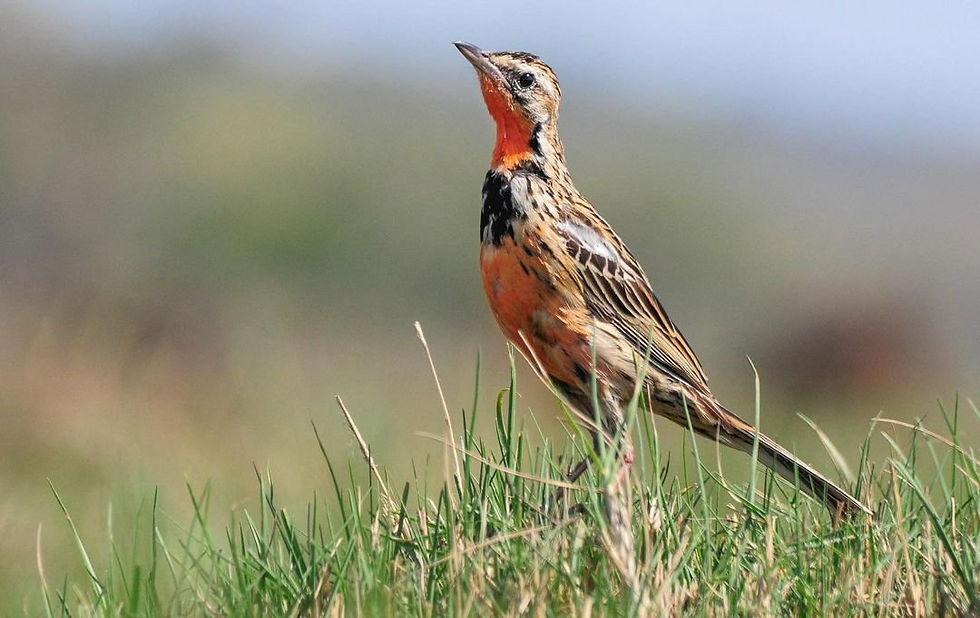Rosy-throated Longclaw: Zululand’s Hidden Gem
- Adam Cruickshank

- Jul 21
- 3 min read
To make sure you never miss a Daily Birder article, subscribe to our mailing list here.
When it comes to trips to see special species, some birds are easy to find, and others make you work hard. This bird, however, was supposed to be one of the easier ones I had traveled for.
We had just spent two fantastic days in Kuleni Game Park in Zululand, enjoying species like Pink-throated Twinspot and Eastern Nicator. On the last day, we decided to make a quick visit to Nibela Lake Lodge, located on the banks of Lake St Lucia. Our main target? The Rosy-throated Longclaw, a species for which the area is well known. With limited time, we booked the resident guide, Lucky, to increase our chances.
We made our way to the site where the Rosy-throated Longclaw had recently been seen, navigating a narrow road along the lake in a surprisingly capable Toyota Camry. I expected a long wait and plenty of walking. But Lucky lived up to his name—he told us to stop at a specific spot, and as we got out of the car, he simply said, “There is the bird.” And sure enough, there it was, moving through the grass. By lying flat on our chests, we were able to get fairly close and snap some decent photos. No slog, no long hours—just great luck and a brilliant guide.

This week’s Bird of the Week is the Rosy-throated Longclaw. It’s one of three longclaw species found in South Africa, alongside the Yellow-throated and Cape Longclaw. What makes longclaws particularly interesting is that they belong to the genus Macronyx, which is endemic to the African continent. That means if you want to see a longclaw, Africa is the only place to be.
There are seven other longclaw species in Africa, all part of the family Motacillidae, the same family as wagtails and pipits, which explains their similar feeding habits and body shape.
To see the Rosy-throated Longclaw, you’ll need to visit eastern South Africa, particularly parts of Zululand. Nibela Peninsula remains one of the best spots to find them, though they’re occasionally recorded in other parts of the iSimangaliso Wetland Park, including Eastern Shores at certain times of the year. The species prefers moist grasslands near open water.
While the species isn’t globally threatened, it is listed as Endangered in South Africa according to the latest BirdLife South Africa Red Data Book. The main threats are habitat fragmentation, degradation, and destruction, a sobering reminder of how fragile these ecosystems can be.

The Rosy-throated Longclaw nests on the ground, and one of its more interesting traits is the use of distraction displays. If you approach the nest, the male may fly jerkily just above the grass, trying to lure you away, much like other longclaw species and some wagtails.
Despite their bright cerise-pink throat, they’re surprisingly well-camouflaged thanks to their buff-colored back, and often opt to run through the grass rather than fly, making them easy to miss.
Here’s a fascinating fact: although the species is now only found north of Zululand, the type specimen (the specimen used to define the species) was collected in Durban (then called Port Natal), nearly 300 km south of its current known range. It’s a clear sign of how much the bird’s habitat and distribution have shifted over time.
All of this is a reminder of the importance of conservation. By supporting organisations like BirdLife South Africa, we help protect not only the Rosy-throated Longclaw, but countless other species that share our landscapes.
So, how many longclaw species have you seen?
Want to see the Rosy-throated Longclaw for yourself?
Book a stay at Nibela Lake Lodge. Nestled in an ancient sand forest on the banks of Lake St Lucia, the lodge offers world-class accommodation and exceptional birding opportunities. Besides the longclaw, you can look forward to species like Narina Trogon, Green Malkoha, African Broadbill, Pink-throated Twinspot, and Gorgeous Bush Shrike.Whether you’re a seasoned birder or a passionate beginner, Nibela is the ideal spot to relax, recharge, and add some lifers to your list.
Want to See All 8 Longclaws?
Birding Ecotours offers expert-led tours that can help you track down every longclaw species across Africa. Whether you’re after the Rosy-throated, Yellow-throated, or even the rarest of them all, Birding Ecotours will take you there. Visit www.birdingecotours.com or email info@birdingecotours.com to start planning your dream trip.

